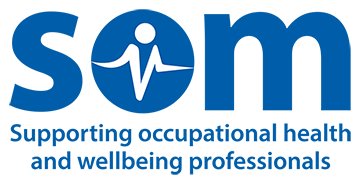Guest blog by Dr Lara Shemtob
The value of occupational health (OH) in the workplace lies in the subject matter expertise that OH clinicians bring to complex and sensitive situations. Making work-related health decisions without the full picture is far from ideal. OH helps bridge that gap through expert, confidential data gathering and clinical analysis.
What Are “Hidden Risks”, and Why Do They Matter?
"Hidden Risks" are risks that are not just unresolved. They’re unseen. They can be some of the most dangerous threats to organisations because they are:
- Unrecognised
- Unprepared for
- Uncontrolled
In a workplace context, these unknowns can manifest in health-related risks that no one has yet identified. When left unchecked, they can lead to significant operational or legal consequences. You only need to look at employment tribunal records for real-world examples of how costly these blind spots can be: financially, reputationally, and emotionally.
Can Health Challenges Be Easily Recognised at Work?
Sometimes, yes. Leaders often have a gut sense that something isn’t quite right. At other times, employees proactively ask for help. Many issues can be managed locally, particularly when the individual is open about their needs and the path forward is clear (e.g., seeing their GP for optimisation of a generally well managed long term condition).
But many situations are more nuanced. That’s where OH clinicians come in. Their involvement adds three elements:
- Clinical Complexity - When there’s clinical risk, it needs to be appraised and understood medically as well as in a workplace context.
- Coordinated Care - Some employees may not yet have a diagnosis but are struggling with symptoms. OH clinicians can help guide the process of figuring out what’s happening, and finding routes to solutions.
- Confidentiality - Employees often want to keep personal health information private. OH enables full clinical assessments that are kept confidential from managers and HR, with only essential information shared with employee consent the vast majority of the time.
Case Study: The Power of OH in Uncovering and Managing Hidden Risks
Ms T works as an administrator at an independent school. Her work has recently declined in quality. She makes a serious error by mixing up pupil details during a safeguarding query. Both she and her manager acknowledge something is off. Ms T admits she’s struggling to focus and has been making mistakes, even outside of work. But she doesn’t know why.
This raises several unknowns:
- Could this decline in performance be related to a health issue?
- Is it safe for Ms T to continue in her role as is?
- What support, if any, would help?
Realising that they lack the full picture, the manager suggests an OH referral, and Ms T agrees.
The OH clinician conducts a full clinical and occupational assessment, identifying possible underlying health concerns. Ms T is referred to her GP for further investigation and is advised to temporarily step back from higher-risk tasks (like safeguarding related administrative work).
Blood tests reveal that Ms T has an underactive thyroid. With treatment, her focus and performance improve, and she resumes her full duties without further incident.
Importantly, Ms T chooses not to share her full medical history with her employer, something the OH clinician supports. The manager remains supportive, and a clear agreement is put in place: Ms T will return to OH if further issues arise.
Conclusion
Hidden risks exist in work and health. In fact, it makes sense that they do. How can managers and employees be expected to figure everything out without clinical expertise and where information sharing may be difficult.
These unknowns are elucidated with OH input. Whether it's spotting hidden health risks, protecting confidentiality, or helping leaders make safer decisions, OH plays a crucial role in reducing risk and supporting health and work.

